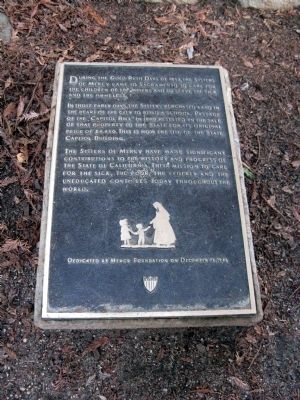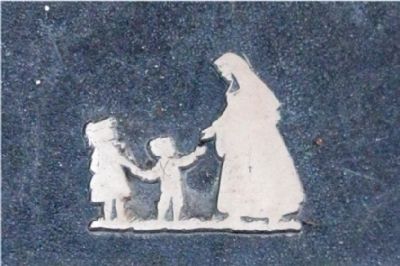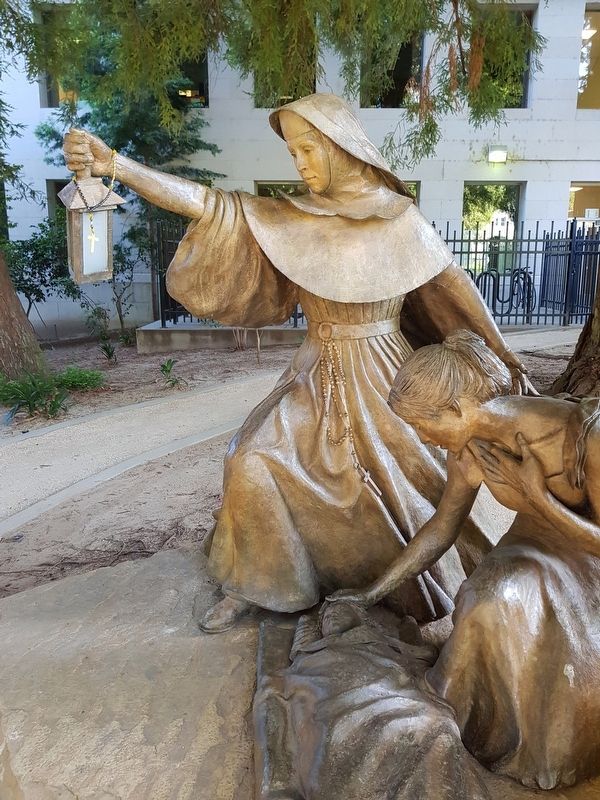Central Business District in Sacramento in Sacramento County, California — The American West (Pacific Coastal)
Sisters of Mercy
During the Gold Rush Days of 1857, the Sisters of Mercy came to Sacramento to care for the children of the miners and to serve the sick and the homeless.
In those early days, the Sisters purchased land in the heart of the city to build a school. Passage of the “Capitol Bill”, in 1860 resulted in the sale of that property to the State for its original price of $4,850. This is now the site of the State Capitol Building.
The Sisters of Mercy have made significant contributions to the history and progress of the State of California. Their mission to care for the sick, the poor, the elderly and the uneducated continues today throughout the world.
Erected 1986 by The Mercy Foundation, December 12, 1986.
Topics. This historical marker is listed in these topic lists: Charity & Public Work • Churches & Religion • Education • Settlements & Settlers. A significant historical year for this entry is 1857.
Location. 38° 34.616′ N, 121° 29.572′ W. Marker is in Sacramento, California, in Sacramento County. It is in the Central Business District. Marker and Monument are located on the grounds of the State Capitol Park. Touch for map. Marker is at or near this postal address: 10th and L Streets, Sacramento CA 95814, United States of America. Touch for directions.
Other nearby markers. At least 8 other markers are within walking distance of this marker. A different marker also named Sisters of Mercy (here, next to this marker); Civil War Memorial (within shouting distance of this marker); Pinus Pinea (within shouting distance of this marker); California State Capitol Park (about 300 feet away, measured in a direct line); California State Capitol (about 300 feet away); Civil War Symbol Yields To Time (about 300 feet away); USS California Bell Memorial (about 400 feet away); Thomas Starr King (about 400 feet away). Touch for a list and map of all markers in Sacramento.
Regarding Sisters of Mercy. The Sisters of Mercy arrived in San Francisco on December 8, 1854, to respond to the city’s greatest needs: the untended sick, the destitute, abused women, orphaned children, and the uneducated. Known as “walking nuns,” they visited shanties and county hospitals and were the first females to visit a state penitentiary, San Quentin prison.
Also see . . . History of the Sisters of Mercy in the Americas. (Submitted on December 29, 2008, by Syd Whittle of Mesa, Arizona.)
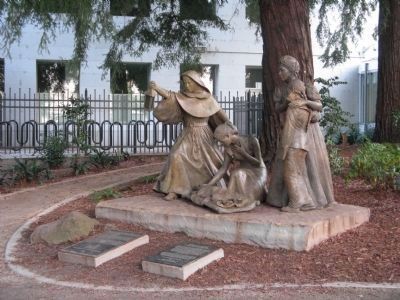
Photographed By Syd Whittle, December 28, 2008
2. Sisters of Mercy Marker and Monument
Click for more information.
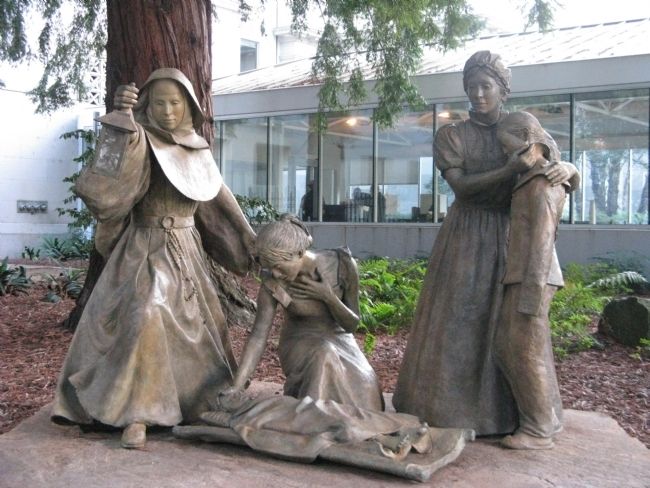
Photographed By Syd Whittle, December 28, 2008
4. Sisters of Mercy Sculpture
One part of the sculpture depicts Mother Russell firmly guiding a worried mother and gravely ill child on a stretcher to the hospital. Another part is a nurse guiding a young Chinese girl, similar to the girls coerced into prostitution and rescued by the sisters who provided a safe haven.
Credits. This page was last revised on February 7, 2023. It was originally submitted on December 29, 2008, by Syd Whittle of Mesa, Arizona. This page has been viewed 2,282 times since then and 36 times this year. Photos: 1, 2, 3, 4. submitted on December 29, 2008, by Syd Whittle of Mesa, Arizona. 5. submitted on August 7, 2019, by J. Makali Bruton of Accra, Ghana.
